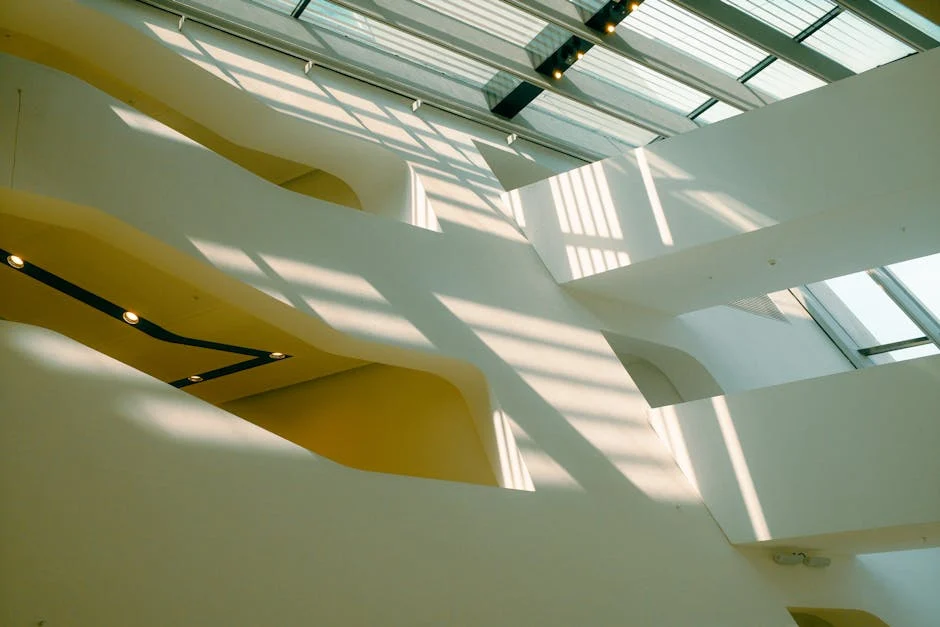Modern Minimalist Space
Introduction to the Modern Minimalist Space
In today’s fast-paced world, the allure of a modern minimalist space is undeniable. More than just a design trend, it’s a conscious lifestyle choice that promotes calm, clarity, and focus. It’s about curating your possessions, embracing functionality, and creating a haven that reflects your personal values, not just your belongings.
This article will explore the core principles of modern minimalism, providing practical tips and inspiration for transforming your home into a serene and stylish sanctuary. We’ll delve into the key elements that define this aesthetic, from color palettes and furniture choices to decluttering strategies and organizational techniques.
Key Elements of a Modern Minimalist Space
Color Palettes and Materials
The foundation of a minimalist space lies in its color palette. Think neutral hues, such as:
- Whites: Crisp white walls are the hallmark of minimalist design, creating a bright and airy atmosphere.
- Grays: Soft grays add depth and sophistication while maintaining a sense of tranquility.
- Beiges and Creams: These warm neutrals provide a cozy and inviting feel.
Accent colors, when used, should be subtle and intentional. Earthy tones like muted greens, blues, and browns can bring a touch of nature indoors. Materials should be natural and textural, including wood, concrete, linen, and wool. These elements contribute to a sense of warmth and authenticity.
Furniture Selection and Placement
Minimalist furniture is characterized by its clean lines, simple shapes, and functionality. Opt for pieces that are:
- Essential: Only include furniture that serves a specific purpose.
- Understated: Choose pieces without excessive ornamentation or detailing.
- Well-Made: Invest in quality furniture that will last for years to come.
Placement is just as important as the furniture itself. Allow for ample negative space, ensuring that the room feels open and uncluttered. Avoid overcrowding and aim for a sense of balance and harmony.
Decluttering and Organization Strategies
Decluttering is the cornerstone of minimalism. It’s about consciously letting go of items that no longer serve you or bring you joy. To declutter effectively:
- Start Small: Tackle one area at a time, such as a drawer or a shelf.
- The One-In, One-Out Rule: For every new item you bring into your home, get rid of something similar.
- Ask Yourself Key Questions: Have I used this item in the past year? Does it bring me joy? Is it essential to my daily life?
Once you’ve decluttered, organization is key to maintaining a minimalist aesthetic. Invest in storage solutions that are both functional and aesthetically pleasing. Use clear containers to easily see what’s inside, and label everything to stay organized.
Lighting and Accessories
Lighting plays a crucial role in creating a minimalist atmosphere. Natural light is ideal, so maximize your windows and avoid heavy curtains. Supplement with simple, elegant light fixtures that provide ample illumination. Consider:
- Recessed lighting: Creates a clean and unobtrusive look.
- Floor lamps: Add height and visual interest.
- Table lamps: Provide task lighting and a soft glow.
Accessories should be minimal and intentional. Choose a few carefully curated pieces that reflect your personal style and add a touch of personality. Think artwork, plants, and decorative objects that are both beautiful and meaningful.
Creating a Minimalist Lifestyle Beyond the Home
Mindful Consumption
Minimalism extends beyond the physical space. It’s also about adopting a mindful approach to consumption. Before making a purchase, ask yourself if you truly need it or if it’s just a fleeting desire. Consider the environmental impact of your choices and opt for sustainable and ethically sourced products whenever possible.
Digital Minimalism
In the digital age, clutter can also take the form of excessive emails, social media notifications, and unused apps. Practice digital minimalism by decluttering your devices, unsubscribing from unnecessary emails, and setting boundaries around your social media usage. This can help reduce stress and improve focus.
Conclusion
Embracing a modern minimalist space is an investment in your well-being. It’s about creating a home that supports your goals, reflects your values, and promotes a sense of calm and clarity. By focusing on essential elements, decluttering intentionally, and adopting a mindful lifestyle, you can transform your home into a sanctuary that nurtures your mind, body, and soul. Start small, be patient, and enjoy the journey of creating a minimalist space that is uniquely yours.














Post Comment